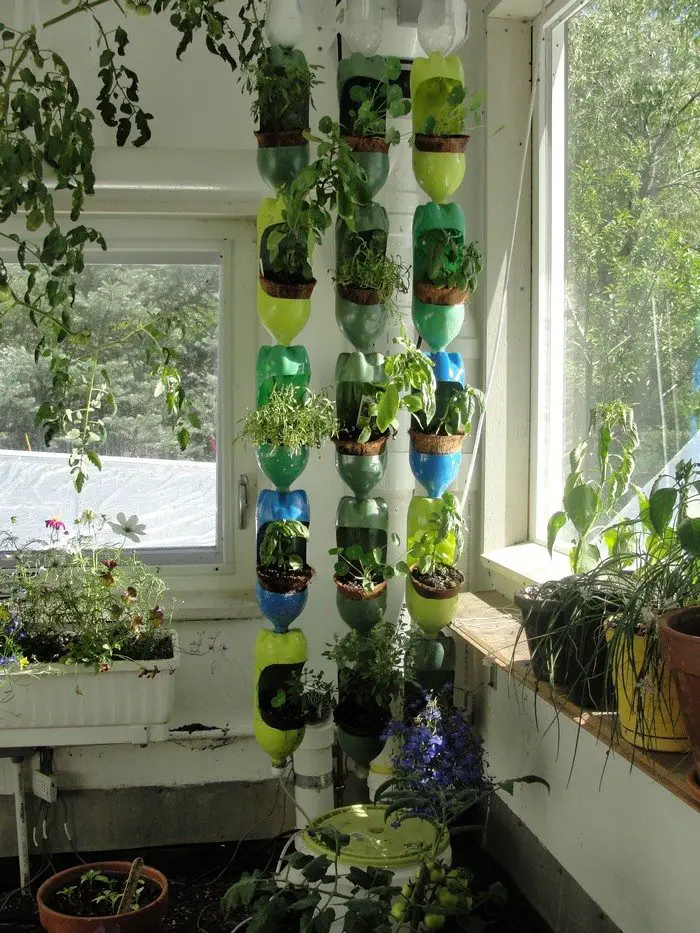DIY Vertical Garden, Recycled Materials

DIY Vertical Garden with Recycled Materials: Eco-Friendly Gardening at Its Best
Are you dreaming of a lush garden but short on space? Why not go vertical with a DIY vertical garden made from recycled materials? Not only is it a great way to upcycle old items, but it's also an eco-friendly gardening solution that transforms your walls into a green oasis. Let's dive into the world of vertical gardening and explore how you can create your own using repurposed materials.
Why Choose a DIY Vertical Garden?
Vertical gardens are more than just a trend; they're a smart and sustainable way to grow plants. By growing upwards, you save precious floor space, making them perfect for apartments, balconies, or small yards. Plus, they add a stunning visual impact to any area, turning a bland wall into a living masterpiece.
The Beauty of Recycled Materials
Using recycled materials for your vertical garden is a win-win. You reduce waste by giving old items a new life, and you create a unique, personalized garden that's kind to the environment. From plastic bottles to old pallets, the possibilities are endless.
Getting Started: What You'll Need
Before you start, gather your materials. You'll need:
- Repurposed materials for your planters (e.g., plastic bottles, tin cans, old gutters, pallets)
- Plants suitable for vertical gardening (e.g., herbs, succulents, ferns, or trailing plants)
- Potting soil
- Basic tools (e.g., scissors, drill, screws, hammer)
- A wall or structure to mount your garden
Choosing the Right Plants
Not all plants are suited for vertical gardening. Opt for plants that are lightweight, have shallow roots, and require minimal maintenance. Some great options include:
- Herbs: basil, mint, thyme
- Succulents: echeveria, sedum, sempervivum
- Ferns: maidenhair fern, staghorn fern
- Trailing plants: pothos, philodendron, ivy
DIY Planters: Ideas and Inspiration
Let's explore some creative DIY planters ideas using recycled materials.
Plastic Bottle Planters
Plastic bottles are abundant and easy to transform into planters. Cut off the bottom of a 2-liter bottle, poke a few drainage holes, fill with soil, and plant your greens. You can hang them using strings or attach them to a wall using hooks.
Tin Can Planters
Old tin cans make excellent planters. Clean them thoroughly, punch a few drainage holes in the bottom, and you're good to go. You can paint them to add a touch of color or leave them as is for a rustic look.
Pallet Vertical Garden
Pallets are versatile and sturdy, making them ideal for vertical gardens. You can either plant directly into the pallet slats or attach separate planters to the pallet. Check out this DIY Vertical Garden guide for a step-by-step tutorial.
Gutter Garden
Old gutters can be repurposed into long, narrow planters perfect for herbs or shallow-rooted plants. Attach them to a wall or fence, fill with soil, and start planting.
Creating Your Vertical Garden
Once you've chosen your planters and plants, it's time to assemble your vertical garden. Here are some tips:
- Layout: Plan your layout before attaching anything to the wall. Consider the size and weight of your planters and the growth habits of your plants.
- Attachment: Use appropriate hardware to secure your planters to the wall. Consider the weight of the planters when wet and choose hardware that can support this weight.
- Watering: Vertical gardens dry out faster than traditional gardens. Ensure each planter has good drainage and water regularly.
- Maintenance: Prune plants as needed to control their size and shape. Replace any plants that aren't thriving.
Vertical Gardening Indoors
Vertical gardens aren't just for outdoors. You can create a stunning living wall indoors as well. Choose plants that thrive in indoor conditions, like pothos, philodendron, or peace lilies. Ensure your indoor vertical garden gets enough light and water.
Troubleshooting Common Problems
Vertical gardening comes with its own set of challenges. Here are some common problems and solutions:
- Drying Out: Vertical gardens dry out quickly due to increased air circulation. Water regularly and consider using a drip irrigation system.
- Pests: Just like traditional gardens, vertical gardens can attract pests. Use organic pest control methods to keep them at bay.
- Weight: Vertical gardens can get heavy, especially when watered. Ensure your wall and hardware can support the weight.
Embracing the Upcycled Garden Trend
Upcycling is more than just a trend; it's a sustainable way of living. By creating an upcycled garden, you're not only reducing waste but also creating a unique, personalized space that reflects your creativity and commitment to the environment.
Conclusion
Creating a DIY vertical garden with recycled materials is a rewarding project that transforms unused spaces into lush, green oases. It's a fun, creative way to grow plants, reduce waste, and make a positive impact on the environment. So, why wait? Start gathering your recycled materials and get ready to create your own vertical gardening masterpiece.
FAQs
Q: What are the best plants for a vertical garden?
A: Plants with shallow roots and minimal maintenance are ideal. Consider herbs, succulents, ferns, or trailing plants like pothos or philodendron.
Q: How often should I water my vertical garden?
A: Vertical gardens dry out faster than traditional gardens. Water regularly, ensuring each planter has good drainage.
Q: Can I create a vertical garden indoors?
A: Yes! Choose plants that thrive in indoor conditions and ensure your garden gets enough light and water.
Q: What materials can I use for DIY planters?
A: Almost anything can be repurposed into a planter. Consider plastic bottles, tin cans, old gutters, or pallets.
Q: How do I attach my vertical garden to the wall?
A: Use appropriate hardware that can support the weight of your planters when wet. Consider the size and weight of your planters and the growth habits of your plants when planning your layout.
0 Response to " DIY Vertical Garden, Recycled Materials"
Post a Comment